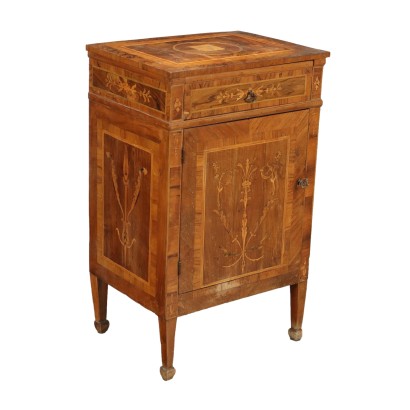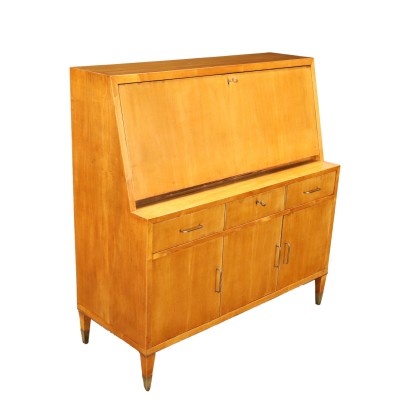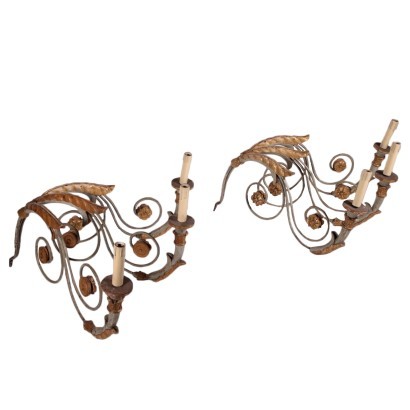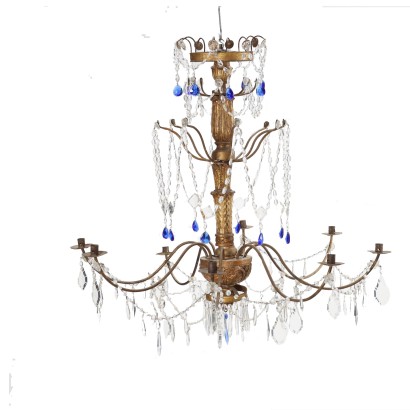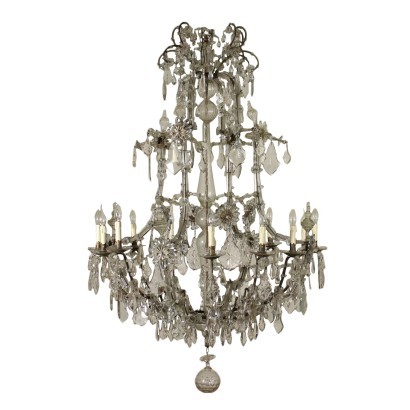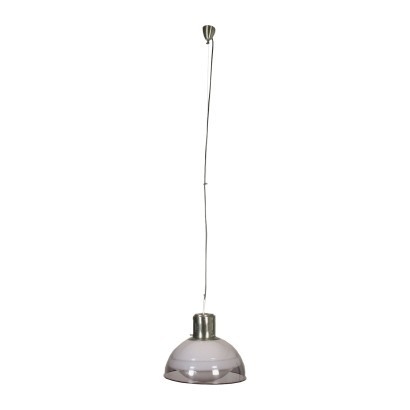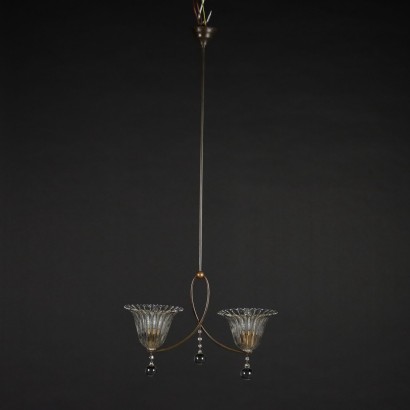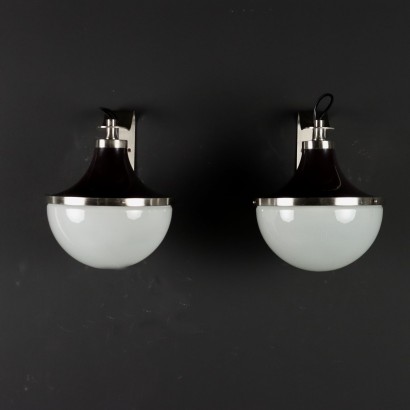Cabinet Neo-Classical Walnut Italy XVIII Century - Italy, Last Quarter XVIII Century
Features
Italy, Last Quarter XVIII Century
Style: Neo-Classical (1765-1790)
Age: 18th Century / 1701 - 1800
Origin: Emilia Romagna, Italy
Main essence: Silver Fir , Maple , Boxwood , Cherry , Walnut , Poplar , Olive
Material: Slab with Different Species , Inlaid Wood
Description
Emilian neoclassical bedside table inlaid and veneered in various essences, Italy, last quarter of the 18th century. Top with double reserve within which there is the heraldic coat of arms of the Salimbeni or Salimei family, the latter descending from a branch of the first, band under the top with a fret of bluebells, front with drawer and door, truncated pyramid-shaped legs with vase-shaped feet; door and sides decorated with foliaceous and phytomorphic elements within reserves. Maple purfling and green stained maple. Poplar and fir interior.
Product Condition:
Product that due to age and wear requires restoration and re-polishing. We try to present the real state of the furniture as fully as possible with photos. If some details are not clear from the photos, what is reported in the description will prevail.
Dimensions (cm):
Height: 90,5
Width: 56
Depth: 42,5
Additional Information
Notes historical bibliographic
The Salimbeni were an ancient family of Siena, of great political and economic importance in Siena in the XIII and XIV centuries, enriched by the trade in grain and spices in the Maremma. The family is also attested in Emilia Romagna, near the city of Modena. As for the Salimei, it is believed that this family descends from a branch of the Salimbeni of Siena, of which family it assumed the coat of arms, moving around 1428 to Velletri, where that nobility was ascribed, covering the first positions both civil and military.Style: Neo-Classical (1765-1790)
This historical period includes a first phase that can be properly defined as the Louis XVI style.nOnly at a later time, with the maturation of archaeological fashions, was a new vision of furnishing civilization formulated and codified, now fully attributable to the Neoclassical Style.
In fact, both trends coexisted in unison until the last years of the eighteenth century.
nIn the field of cabinet making, the Directoire, Retour d'Egypte, Consular and Empire styles also fall within the neoclassical era.
nFind out more about Neoclassicism with the insights from our blog...
n
Age: 18th Century / 1701 - 1800
18th Century / 1701 - 1800Main essence:
Silver Fir
Soft coniferous wood, used for rustic furniture or to build the chest, that is the structure, of furniture then veneered in more precious woods. It has been used since ancient times, its most valuable use is, in the Spruce variant, in the inlays of French antique furniture of the '700 . The spruce, more typical of northern Europe, in Italy grows mainly in the Eastern Alps at altitudes above 1300 m. The noblest use of this essence was in the construction of violins, guitars and cellos: Stradivari himself produced his famous violins with this wood.Maple
Hard, light wood used for inlays. It grows mainly in Austria, but it is widespread throughout the northern hemisphere, from Japan to North America, passing through China and Europe. It is one of the lightest woods ever, tending to white, it is similar to lime or birch wood. The briar is used in the production of ancient secretaires .Boxwood
With a yellowish color, it is a very compact and hard wood, of oriental origin, which is obtained from evergreen shrubs of the Buxaceae family. It is used for inlays and for all-round workings both as furniture finishes and as small objects and sculptures.Cherry
Obtained from prunus cerasus , a plant of oriental origin, it is a hard wood with a light and delicate color, with a reddish vein. Due to its diffusion and availability it was used in Europe in popular furniture. In cabinet making, in the seventeenth century, it was widely used in France and England for inlay work. In Italy it was very successful in Lucca. It was also very popular in the United States for the manufacture, from the late 1600s, of commonly used furniture.The dictionary of antiques: Eclecticism
Classic Monday: a sofa from the 1800s example of eclecticism



